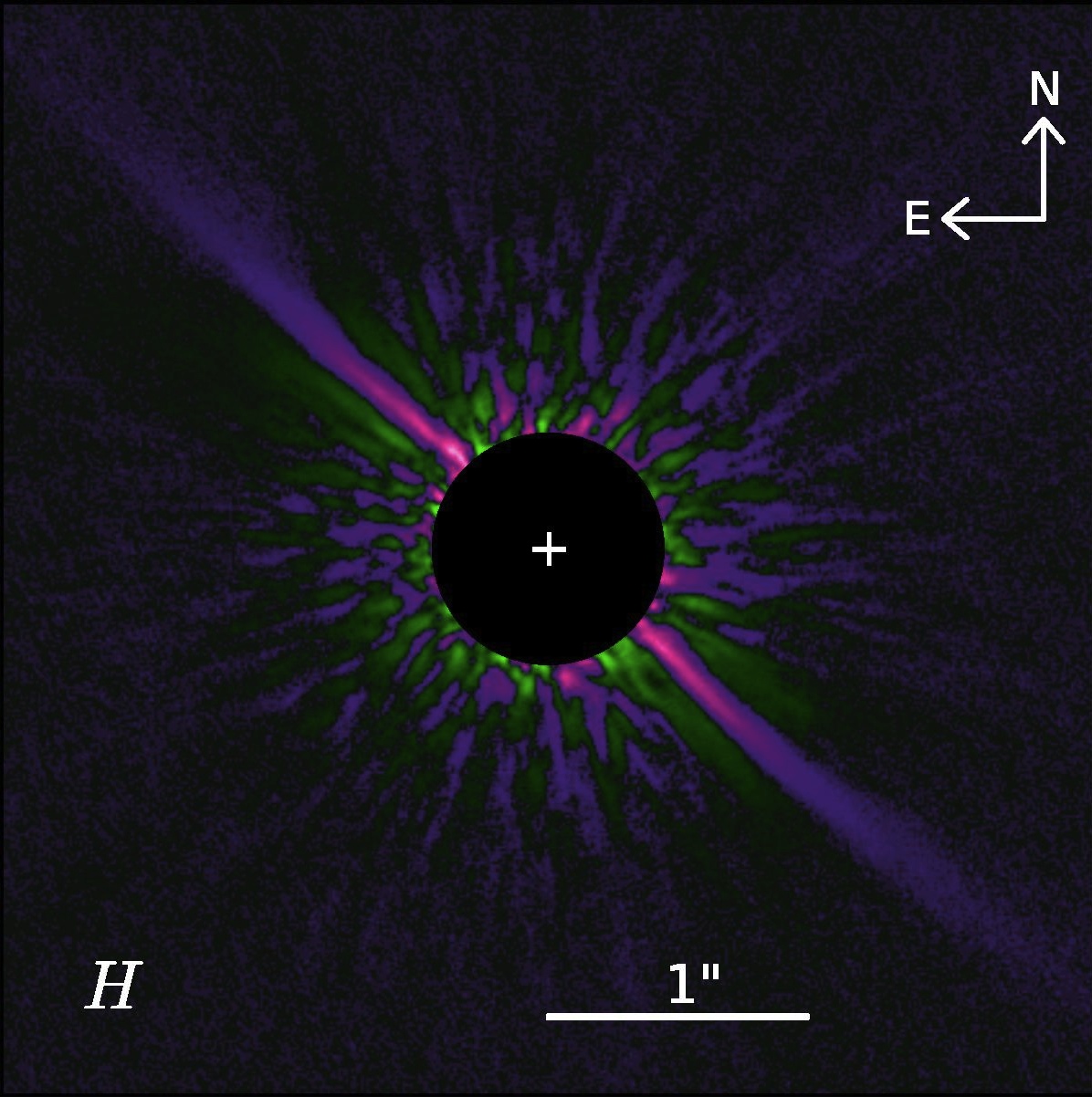My research focuses on high-contrast coronagraphic imaging of circumstellar disks and exoplanets. Lately, I have had the good fortune to conduct this research as part of the Gemini Planet Imager Exoplanet Survey (GPIES) team. Previously, I worked closely with my former graduate advisor, Prof. Mike Fitzgerald, as well as many other fantastic collaborators.
Recent Publications
- Direct
Imaging of the HD 35841 Debris Disk: A Polarized Dust Ring from
Gemini Planet Imager and an Outer Halo from HST/STIS,
Esposito, T.; Duchene, G.; Kalas, P.; Rice, M.; et al.
2018, The Astronomical Journal, Vol 156, Issue 2, 47 -
A Decade of MWC 758 Disk Images: Where Are the Spiral-arm-driving
Planets?,
Ren, B.; Dong, R.; Esposito, T.; Pueyo, L.; et al.
2018, The Astrophysical Journal Letters, Volume 857, Issue 1, L9 -
Evidence that the Directly-Imaged Planet HD 131399 Ab is a
Background Star,
Nielsen, E. L.; De Rosa, R. J.; Rameau, J.; Wang, J. J.; Esposito, T.; et al. 2017, The Astronomical Journal, Volume 154, Issue 6, 218 - Bringing "The Moth" to Light: A Planet-Sculpting Scenario for the HD 61005 Debris Disk,
Esposito, T.; Fitzgerald, M. P.; Graham, J. R.; Kalas, P.; Lee, E. J.;
et al. 2016, The Astronomical Journal, Vol 152, Issue 4, 85
High-Contrast Imaging
One of the biggest obstacles to direct imaging of exoplanets and circumstellar disks is the high contrast between those objects and the host star, which can be several orders of magnitude brighter. Angular differential imaging (ADI) is a state-of-the-art observing and image processing technique developed to suppress that starlight. However, when applied to extended objects such as disks, ADI has the effect of subtracting flux from the disk, as well. This "self-subtraction" is undesirable because it biases subsequent measurements of the disk's surface brightness, upon which inferences about the disk's morphology and composition are made.
My collaborators and I have developed a new technique to forward-model and correct for this self-subtraction of extended emission. Requiring only a model of the disk's underlying brightness distribution, the parallactic angles of the ADI data set, and the parameters used in the ADI (or LOCI) image processing, the algorithm quickly and accurately computes the location and amplitude of self-subtraction. Thus, we can account for the spatially-dependent flux loss and make unbiased measurements of the disk surface brightness. See Esposito et al. 2014 for full details.
Debris Disks
Circumstellar debris disks represent a stage of planetary system evolution thought to be concurrent with terrestrial planet formation. These disks primarily consist of dust and rock ranging from submicron-sized grains to kilometer-sized planetesimals.
Imaging debris disks in the near-infrared probes the distribution of the micron-sized grains via scattered starlight. Structures in the dust, such as clumps, gaps, asymmetries, and warps, act as signposts of planets that have gravitationally perturbed the dust. Thus, debris disks provide information about the formation and evolution of these systems. They also offer the opportunity to indirectly detect planets unobservable by other means.
For more information on debris disks, this Wikipedia article is a decent starting point.
Astronomical Instrumentation
As a graduate student, I was a member of the UCLA Infrared Lab and part of the project to upgrade the imager portion of the OSIRIS instrument on Keck 1.
Past Research
I spent about one year (June 2008 - June 2009) at New York University helping to build a cosmic ray telescope out of a rooftop water tank as part of the New York Schools Cosmic Particle Telescope project. I also assisted in efforts to create a comprehensive catalog of active galactic nuclei.
